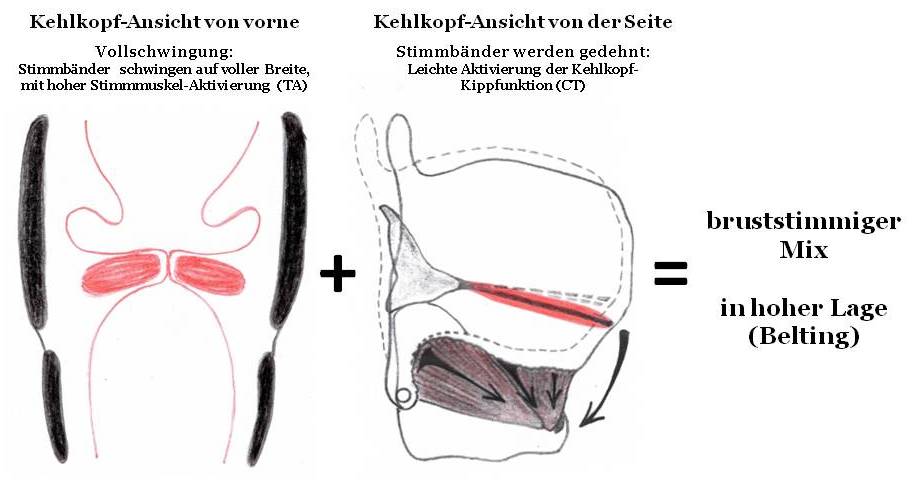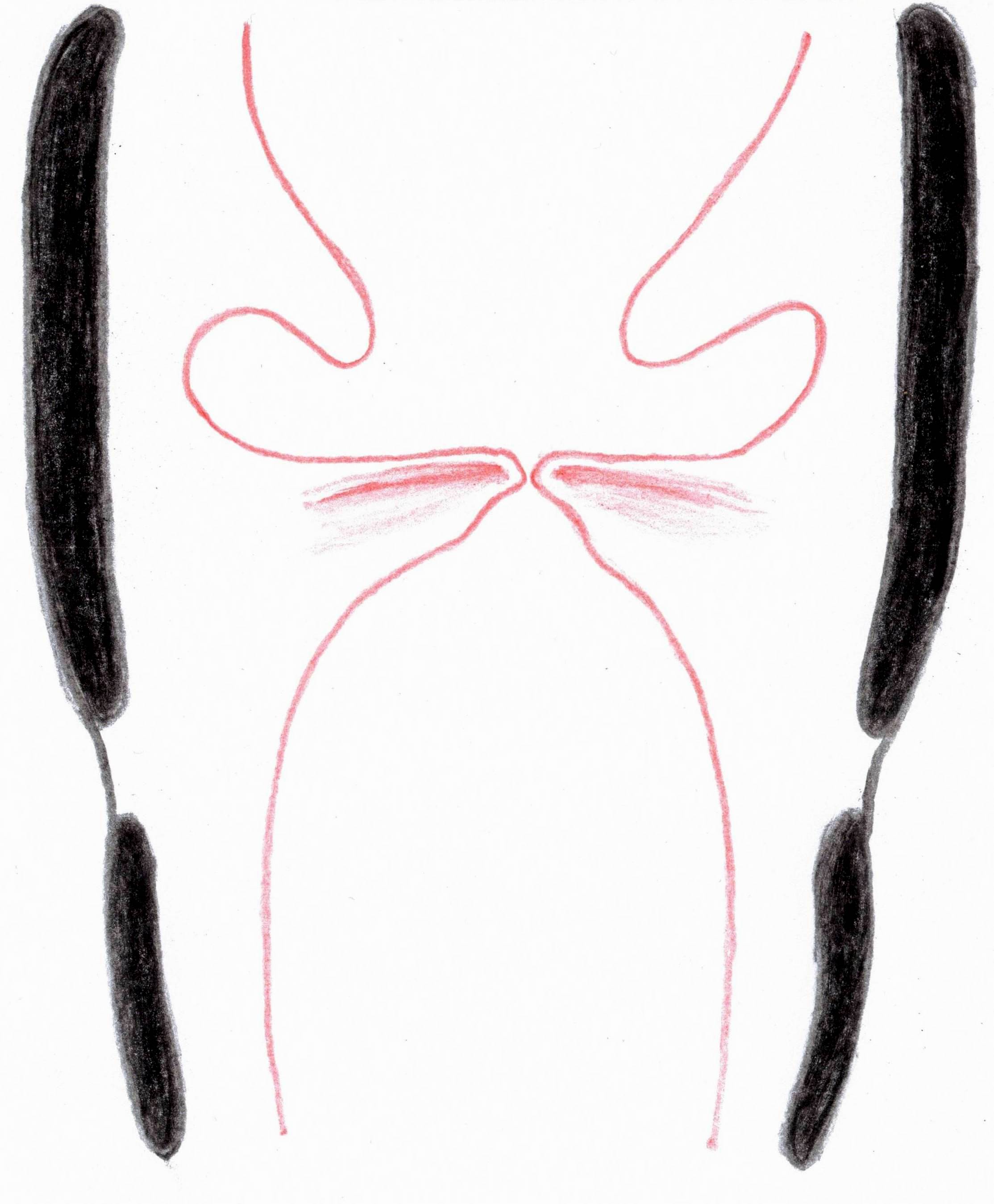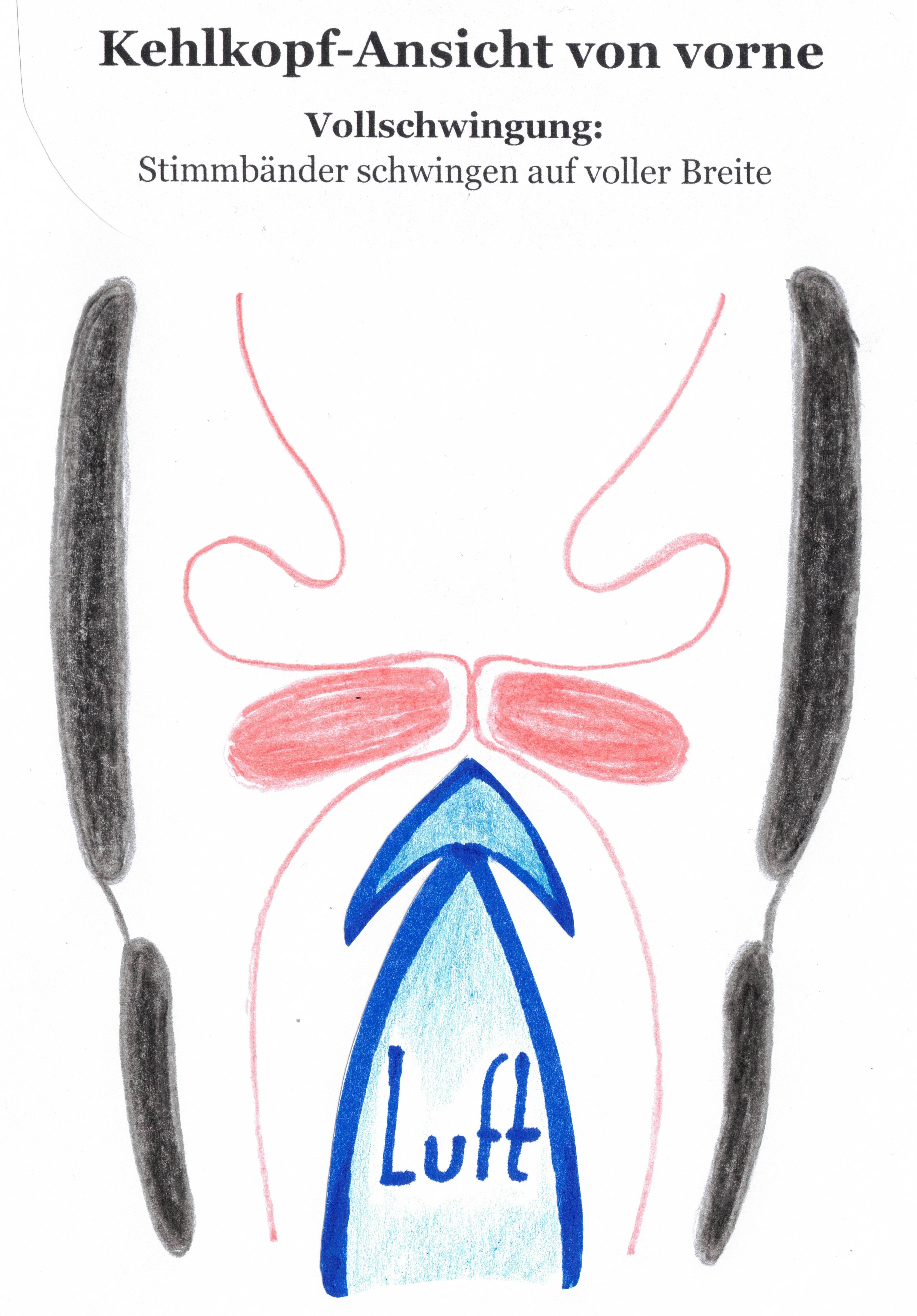It's a nightmare for many talented singers: in the middle of a powerful, high-pitched vocal phrase, the voice breaks - it turns into a miserable, thin head voice. It's a problem that men are more likely to struggle with than women. They often already know the places where this happens, they become their "fear spots" when singing.
Stars and professionals usually look so confident and easy when they sing high notes. Singing powerfully in a high register, doesn't that simply mean: singing with power, powering up? Yes and no. Vocal power is a demanding muscular balancing act involving the mouth, throat, breath and indeed the whole body.
If the voice overlaps, this balance will break down at some point. Pushing even harder is then the wrong reflex - forcing out the high notes only reinforces the vocal breaks. In this blog article, we ask ourselves: How do these breaks occur? Where can we start to stabilise the voice? And what exercises can help us do this?
Your Belting voice
To get to the bottom of the problem, we first need to understand what happens when we sing high notes with a full voice, the so-called Beltinghappens physically and anatomically. Let's assume an experienced singer "belts" a note in a high vocal range. If we could look directly into his or her throat, we would see the following:
Firstly: The inner muscle of the vocal cords is tense and the vocal folds vibrate at full width. This is where the full, chest voice-like tone of the song comes from, its call voice quality. Here you can see it in the picture, coloured red:

As you can also see in the drawing, the larynx is included secondly tilted slightly forwards and downwards with the help of the external laryngeal muscles. In this way, the vocal cords are stretched so that the sound does not remain in the chest register, but can rise above the middle register.
From a vocal physiological point of view, the belt tone is a balance between the inner and outer laryngeal muscles, and a precisely equalised balance at that. If your inner vocal muscle is too weak to withstand the stretching of your vocal cords at a high pitch, the full vibration of your vocal folds stops: They only vibrate at the inner edge.

You hear this as a vocal break. Your full tone changes to the head voicelike involuntary yodelling. An embarrassing loss of vocal control. If this sometimes happens to you, the good news is that with the right exercises you can learn to stabilise your voice in a high register.
For practising:
The belt tone is yours Call voicebut not a loud roar. The trick is to take a little power out of your chest voice towards the top, just enough to stretch your vocal cords into the high register - while retaining the "chesty", full sound of your voice. This is how you get high in your call voice for belting (called "chest-voiced mix" in the picture above). The best way to do this is with this exercise:
- Start practising the call voice in a comfortable higher position: shout an upward (and then downward), joyful "yeah" with an open "ä", or a "wow" with an open "o" (as in "sun"), only as loud as when shouting across the street.
- Then call again, but hold the upper note for a moment and descend in slow steps, for example a fifth down on the pitches 5-4-3-2-1: "Yea _ _ _ _ _" or "Wo _ _ _ _ _". Then go up a semitone step and repeat the whole thing as long as your call tone remains stable and doesn't flip over into the thin head voice.
Your support
Your voice can also overflutter in a high register if the air pressure in your Breathing support does not match the energy level of your vocal chords.
Try it out for yourself with a Auxiliary exercise. What you make vibrate when you sing are your "vocal folds", so called because they resemble the lips of the mouth. Now blow with your lips, without sound. At first with a minimal flow of air, just enough to make your lips bubble evenly. This corresponds to the vibration of your vocal folds at the inner edge, your head voice.
Now press your lips together a little more while bubbling. This will make the bubbling louder, but you will also notice that you need more air pressure. Singing with a full voice in a high register is like this powerful bubbling. The high muscular tension of your vocal folds needs a higher, more even air pressure. Air pressure from below. This is the third Factor.

But be careful, this is also a balancing act. Too much air pressure from below will crash your voice. When singing in a high register, you need much less air and air pressure than for physically strenuous work, for example. What matters most is your supporting muscles. They ensure that your singing is carried by a constant, moderately strong air pressure.
If the muscle tension of your support decreases only slightly, the airflow on which you sing becomes unstable or breaks off too early. The result: your voice wavers and switches to a lower-energy vibration mode. You can already guess what this means: you rolls over into the thinner head voice.
For practising:
- Stand in front of a large mirror and assume an upright posture - imagine you are a puppet on a string. Then inhale briefly and silently, as if before the surprised exclamation: "Oh my God!" Relax your abdominal muscles. Then start your supported, even exhalation with a long drawn-out "fff", first unvoiced, then with a voiced "www" (or with an unvoiced, then voiced "sss").
- Use your hands to feel how your abdominal wall moves inwards very slowly, but how your lateral torso muscles maintain the inhalation width towards the outside for as long as possible by stretching slightly. To check, hold a candle in front of your mouth: the flame will show you how evenly you are dosing the air pressure.
Your articulation
It is often overlooked that articulation can also cause a break. Sung text in a high register demands a great deal of dexterity from the tongue. It must Vowels and Consonants well into the airflow. With every unvoiced "k", "t" or "p", you briefly interrupt the airflow with your tongue or lips while singing - and then continue it with a small Air explosion continued. In English, these consonants are therefore aptly called "plosives".
Many singers articulate so precisely and connected that the "plosives" do not disrupt the flow of the song. Others tend to use hard consonants in their articulation - instead of embedding them in the air stream, they chop into the air stream with punchy "k", "t", "p "s. German-speaking amateur singers in particular often sing their song lyrics with these hard consonants. What works well in the speaking voice range can destroy the demanding muscular balance described above when singing at a high pitch: The highly tensed vocal cords can no longer withstand the sudden, explosive air pressure, and the sound breaks out.
For practising:
- Pick out one of the tricky, high vocal phrases where your voice tends to crack. As a precaution, sing the phrase a few notes lower and: Leave the Drop consonants. For example, "shake it off" becomes a pure vowel sequence, "äi - e - o". You go into your belt voice as usual, but sing the vowels in a connected line, legato.
- Then tie in the consonants again, but in a different way than usual: you continue to sing legato and only minimally tap the palate with your tongue on the "k" and "t". Exaggerate a little by making the consonants even softer. Your "k" sounds almost like a "g", your "t" like a "d": "shage-id-of". Now you sing with a powerful calling voice, but soft consonants.
- Then take out the exaggerated softness again a little, but keep the Precise, minimal articulation which only taps your airflow and no longer chops it. Once you have mastered the pitch without vocal rolls, gradually go higher until you have returned to your original pitch.
Conclusion
Singing with power in a high vocal range is great fun. To ensure that the fun lasts and leads you to success, you need a good singing technique. Especially for the "tricky parts" at the top, preferably before they become scary. (1) Belting exercises for your correct chest-voiced "mix" in the high register, (2) support exercises for the air stream on which you sing, and (3) precise, effort-saving articulation: this will help you to protect your singing against vocal breaking points.
However, practising alone at home without an expert outside view is a risk. Mistakes can creep in, especially when practising high passages, which can damage your voice. It is better to go to an experienced singing teacher or a teacher of popular singing. With professional support, there's a good chance that you'll soon forget your fears. And you'll have fun singing powerfully in the long term.






